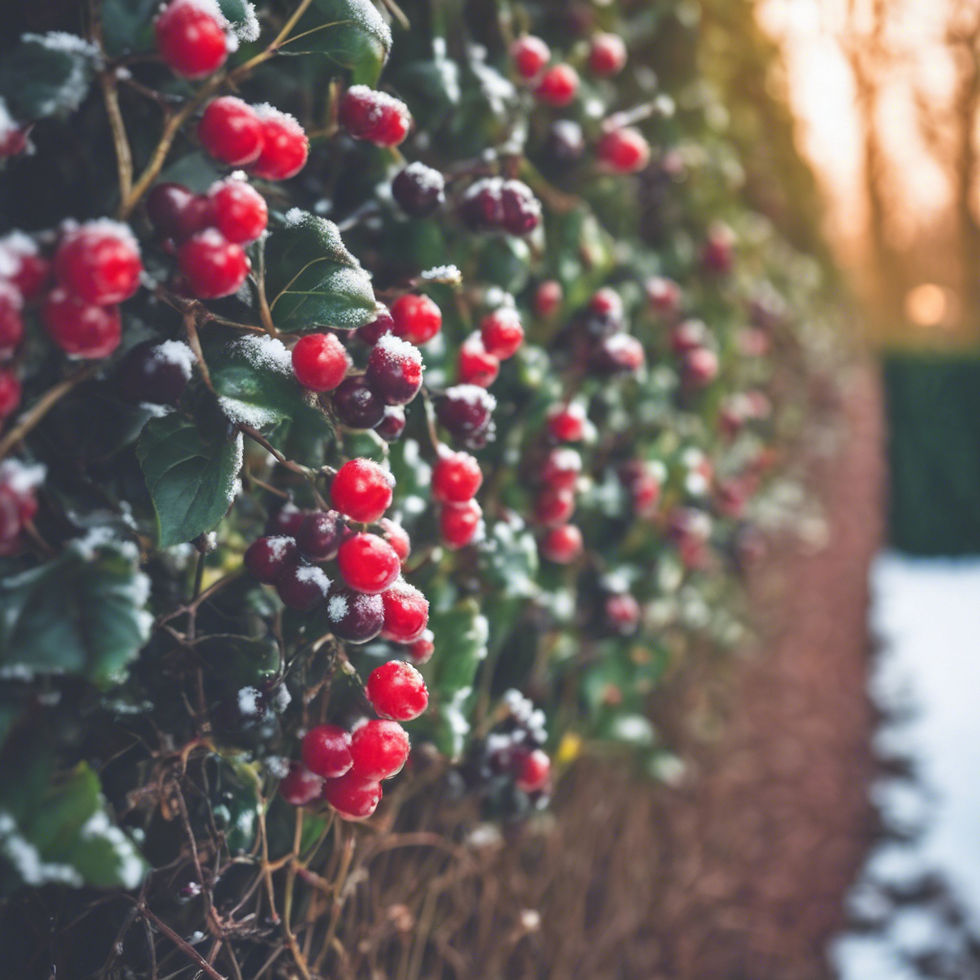Creating a wildlife-friendly hedgerow in your garden
- John Grundy

- Feb 4
- 4 min read
Creating a hedgerow in your garden is not just a delightful way to enhance your outdoor space; it also plays a vital role in supporting local wildlife. Imagine stepping out into a vibrant, green landscape alive with buzzing bees, chirping birds, and fluttering butterflies. A well-planned hedgerow can serve as a natural haven, providing essential habitats and food sources for various species. In this guide, you will learn how to design a wildlife-friendly hedgerow that enriches both your garden and the ecosystem.
Why Choose Mixed Native Hedging Plants?
Opting for a mix of native hedging plants is a smart gardening strategy. Native plants are already adapted to your local climate, allowing them to thrive without excessive care. In fact, research shows that native plants require up to 50% less water than non-native varieties, making them easier to maintain.
A diverse mix offers different heights and colors throughout the year, creating a visually appealing backdrop. More importantly, this variety boosts biodiversity. For example, a hedge composed of hawthorn, blackthorn, and wild rose can attract a wide assortment of insects and birds. Studies reveal that gardens with native plants can support twice as many bird species compared to those with non-native plants, contributing to a healthier environment right in your backyard.
Selecting the Right Plants
When choosing your native hedging plants, it's essential to consider your garden's unique conditions. Some plants excel in wet soil, while others prefer drier areas. Getting to know your space ensures that your hedgerow flourishes. A diverse flowering time is also crucial. This keeps your hedgerow vibrant across all seasons.
Here are three excellent native hedging plant options found in the UK:
Hawthorn (Crataegus monogyna): This plant is characterized by its beautiful white spring flowers and striking red berries in autumn, offering sustenance for countless birds.
Blackthorn (Prunus spinosa): With its dramatic spiky branches and fragrant flowers, blackthorn is a magnet for bees and provides tasty sloes for wildlife.
Wild Rose (Rosa canina): Known for its lovely pink blooms, wild roses not only attract insects but also offer nutrients for birds during the winter months.
By incorporating these plants into your hedgerow, you will create a lively, multi-layered habitat teeming with life.

Ground Cover with Hedgerow Perennials
Enhancing your hedgerow with perennials adds ground cover and seasonal flair. These plants can fill in gaps, suppress weeds, and help retain soil moisture. Select perennials that bloom at different times to ensure continuous visual interest and provide nectar for pollinators.
Here are three great options for hedgerow perennials:
Wild Garlic (Allium ursinum): This fragrant plant attracts pollinators and can be used in cooking, adding both utility and beauty.
Meadowsweet (Filipendula ulmaria): With its fluffy clusters of white flowers blooming in late summer, meadowsweet provides essential nectar for butterflies and bees.
Campion (Silene dioica): Its bright red flowers are not only eye-catching but also draw in beneficial insects, adding a pop of color to your hedgerow.
By carefully selecting a variety of perennials, you will create a stunning outdoor display that changes with the seasons while benefiting local wildlife.

Care and Maintenance of Your Hedgerow
To keep your wildlife-friendly hedgerow thriving, regular care and maintenance are essential. Here are some practical tips to ensure your plants remain in good shape:
Formatve Pruning. In the first couple of years prune regularly to establish a thick wind resistant hedge. As in the image above, formative pruning can be carried out in late summer or autumn. This avoids disturbing nesting birds and in young hedge plants they wont have produced any fruit, so you wont be robbing the birds and small mammals of winter fodder.
Prune Wisely: Aim to maintain the natural shape of your plants. Early spring is the best time to prune, to allow birds the chance to feed on any berries through the winter months. Pruning at this time also allows for healthy growth without stress.
Plant in the Autumn or early spring. Newly planted hedges and perennials will need consistent watering, to establish their roots. Planting bare root saplings, one to two year old trees, will ensure rapid growth and plenty of natural rain water to help establish the young trees.
Mulch: Using freshly cut meadow grass from your wildlife lawn to mulch between and around your young hedge plants will help retain moisture and inhibit weeds. When the leaves fall in autumn simply sweep them under the hedge as an extra mulch.
With these straightforward maintenance strategies, you can cultivate a beautiful hedgerow that flourishes and supports wildlife.
Transform Your Outdoor Space
Establishing a wildlife-friendly hedgerow doesn't just beautify your garden; it enhances local ecosystems too. By incorporating mixed native hedging plants and underplanting with perennials, you will create a lively habitat that evolves through the seasons.
Whether you are just starting out as a gardener or are looking for exciting new ideas, a mixed hedgerow offers abundant opportunities to connect with nature. With the right care, your hedgerow will provide a sanctuary for wildlife and joy for you and your family for years to come. Not only that but your hedge will last for hundreds of years longer than any fence.





Comments